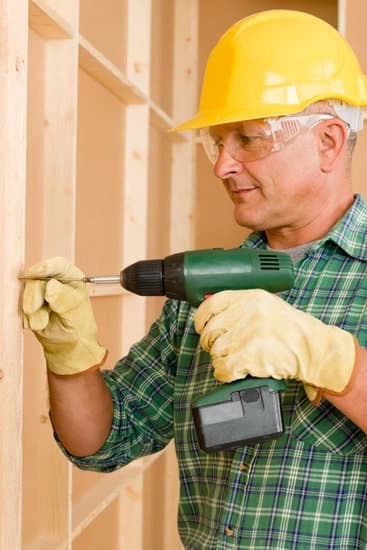Are you wondering if you can refinance a home improvement loan during construction? Refinancing a loan during a construction project can be a complex process, but it is possible with the right approach.
Whether you have a home improvement loan or a construction loan, understanding the differences between the two and knowing your options for refinancing is crucial. In this article, we will explore the possibilities of refinancing a home improvement loan during construction, discuss the pros and cons, provide steps to take, and offer alternatives to consider.
Home improvement loans and construction loans serve different purposes when it comes to financing a home renovation or construction project. While both types of loans can help in funding these projects, they have distinct features and requirements that need to be considered. Understanding these differences can ultimately impact your decision on whether to refinance during construction or not.
Refinancing a home improvement loan during construction comes with its own set of benefits and drawbacks. It’s important to weigh these factors before making a decision. From potential savings on interest rates to increased closing costs and extended timelines, there are various pros and cons to consider when contemplating refinancing your loan while in the midst of a construction project.
The Difference Between Home Improvement and Construction Loans
When it comes to financing a home improvement project or new construction, it’s important to understand the difference between home improvement loans and construction loans. Home improvement loans are specifically designed to cover the costs of renovations and upgrades to an existing property. On the other hand, construction loans are meant for financing the construction of a new home from the ground up.
One of the key differences between these types of loans is how the funds are disbursed. With a home improvement loan, the funds are typically distributed all at once. This allows homeowners to begin their projects immediately with access to the full loan amount. In contrast, construction loans often have a disbursement schedule based on project milestones, such as completion of foundation work or framing.
Another important distinction between home improvement and construction loans is how they are structured in terms of interest rates and repayment terms. Home improvement loans may offer fixed or adjustable interest rates, depending on the lender and loan program. Construction loans, on the other hand, usually have variable interest rates during the construction phase and then can be refinanced into a traditional mortgage once the project is completed.
It’s also worth noting that while both types of loans provide funding for property improvements, they each have different eligibility requirements and application processes. For example, applicants for a construction loan will likely need to provide detailed building plans, cost estimates from contractors, and a timeline for completion in order to qualify for financing. Conversely, home improvement loan applicants may only need to provide proof of equity in their homes and estimates for renovation costs.
| Loan Type | Funds Disbursement | Interest Rates | Eligibility Requirements |
|---|---|---|---|
| Home Improvement Loans | All at once | Fixed or adjustable | Proof of equity in home |
| Construction Loans | Scheduled disbursements | Variable during construction phase | Detailed building plans & cost estimates |
Can You Refinance a Home Improvement Loan During Construction?
Refinancing a home improvement loan during construction is a common question among homeowners who are looking to make significant changes to their properties. Understanding the process of refinancing during construction can help you make an informed decision about your home project. Here’s what you need to know about refinancing a home improvement loan during construction:
1. Eligibility for Refinancing: Before considering refinancing your home improvement loan during construction, it’s essential to understand if you are eligible for this option. Typically, lenders will look at your credit score, income, and the current value of your home to determine if you qualify for refinancing.
2. Timing Considerations: Timing is crucial when it comes to refinancing during construction. If you have already started the construction process, finding a lender who is willing to refinance your loan may be more challenging. However, if the construction has not yet begun or is in its early stages, you may have more options available to you.
3. Benefits of Refinancing: Refinancing a home improvement loan during construction can offer several benefits, including potentially securing a lower interest rate or extending the term of your loan. This could result in lower monthly payments and overall savings over time.
Keep in mind that there are also potential drawbacks associated with refinancing during construction, such as additional closing costs and fees. It’s important to weigh the pros and cons carefully before making a decision on whether or not to refinance your home improvement loan during construction.
Pros and Cons of Refinancing During Construction
Refinancing during the construction of your home improvement project can have both advantages and disadvantages. Before making a decision, it’s important to weigh the pros and cons to determine if it’s the right move for you.
Pros of refinancing during construction:
- Lower interest rates: Refinancing allows you to take advantage of potentially lower interest rates, which could save you money in the long run.
- Access to additional funds: If you need more funds for unexpected expenses or upgrades during construction, refinancing can provide access to additional cash.
- Consolidation of debt: If you have existing debts or loans, refinancing can help consolidate them into one loan with a single monthly payment.
Cons of refinancing during construction:
- Closing costs and fees: Refinancing involves closing costs and fees, which can add to the overall cost of your project.
- Risk of higher costs: There is a risk that interest rates may increase during the construction period, resulting in higher overall costs if you refinance.
- Potential delays: The refinance process could potentially delay the construction timeline, causing inconvenience and added stress.
Ultimately, when considering whether to refinance during construction, it’s crucial to carefully evaluate your financial situation and future plans for your home. It’s recommended to consult with a financial advisor or mortgage professional to explore all available options and make an informed decision.
Steps to Refinance a Home Improvement Loan During Construction
Refinancing a home improvement loan during construction is a common approach for homeowners looking to optimize their financing options and potentially save money on interest rates. However, it’s important to understand the process and considerations involved in refinancing during the construction phase of your project.
One of the key factors to consider when refinancing a home improvement loan during construction is the current interest rates. If interest rates have decreased since you initially took out your loan, refinancing could potentially save you money over the long term. Additionally, if your credit score has improved since you obtained your initial loan, you may qualify for a lower interest rate, making it an opportune time to refinance.
Another factor to keep in mind when considering refinancing during construction is the status of your project. If significant progress has already been made and your home’s value has increased as a result, you may be eligible for a higher appraisal value. This higher appraisal value can provide additional equity that can be leveraged through refinancing, enabling you to access more favorable loan terms.
When deciding whether to refinance a home improvement loan during construction, it’s crucial to carefully evaluate the potential pros and cons. On one hand, refinancing could result in lower monthly payments or reduced interest costs over time. However, it’s essential to weigh these benefits against any fees or costs associated with initiating a new loan. It’s important to conduct a thorough cost-benefit analysis before making a decision.
| Factor | Consideration |
|---|---|
| Interest Rates | If interest rates have decreased, refinancing could save money |
| Construction Progress | If significant progress has been made, higher appraisal value can be leveraged |
| Cost-Benefit Analysis | Weigh the benefits of lower monthly payments against potential fees and costs |
Factors to Consider Before Refinancing During Construction
Refinancing a home improvement loan during construction can be a tempting option for homeowners looking to take advantage of lower interest rates or access additional funds for their project. However, there are several factors that should be carefully considered before making the decision to refinance.
Current Interest Rates and Loan Terms
One of the key factors to consider before refinancing during construction is the current interest rates and loan terms. It’s important to assess whether the new loan terms will be more favorable than the existing ones, taking into account potential savings on monthly payments and overall interest costs. Additionally, consider any penalties or fees associated with refinancing your loan.
Construction Progress and Budget
Before pursuing a refinance during construction, it’s crucial to evaluate the progress of your home improvement project and how much of the budget has already been utilized. Refinancing may provide access to additional funds, but it’s essential to have a clear understanding of how these funds will be used and whether they are necessary for completing the project successfully.
Risk Assessment
Refinancing during construction also involves assessing the potential risks involved. Consider whether there are any uncertainties or challenges in completing the project, as well as how a refinance may impact your overall financial stability. In some cases, it may be more advantageous to wait until the construction is completed before considering a refinance.
Ultimately, homeowners should carefully weigh these factors before deciding whether to refinance their home improvement loan during construction. It’s important to consult with a financial advisor or a mortgage specialist who can provide personalized guidance based on your specific circumstances and goals. While refinancing can offer benefits, it’s essential to make an informed decision that aligns with your long-term financial objectives and the successful completion of your home improvement project.
Alternatives to Refinancing During Construction
When it comes to home improvement and construction projects, securing the right financing is crucial. While refinancing during construction may seem like a viable option, there are alternatives that may better suit your needs. Here are some alternatives to consider when you’re looking for financing options during the construction phase of your home improvement project.
Personal Loans
One alternative to refinancing during construction is obtaining a personal loan. Personal loans can provide the funds you need for your project without impacting your existing mortgage. These loans typically have shorter terms and higher interest rates than refinancing options, but they can be a quick and convenient way to access funds for construction.
Home Equity Line of Credit (HELOC)
A HELOC is another option for financing your home improvement project during construction. This type of loan allows you to borrow against the equity in your home and use the funds as needed during the construction phase. HELOCs often have variable interest rates and flexible repayment terms, making them a versatile option for funding ongoing construction expenses.
Construction-to-Permanent Loan
If you’re building a new home or undergoing extensive renovations, a construction-to-permanent loan may be a suitable alternative to refinancing. This type of loan provides funding for both the construction phase and then transitions into a traditional mortgage once the project is complete. Construction-to-permanent loans streamline the financing process and eliminate the need for separate construction and permanent mortgages.
Considering these alternatives can help you make an informed decision about how to finance your home improvement project without having to refinance during the construction phase. Each option has its own advantages and considerations, so it’s important to carefully evaluate which one best aligns with your financial goals and timeline for completing the project.
Final Thoughts
When it comes to undertaking home improvement projects, the financial aspect is a significant consideration. Understanding the differences between home improvement loans and construction loans can help homeowners make informed decisions about their financing options. While both types of loans serve different purposes, it’s important to carefully consider whether refinancing a home improvement loan during construction is the right choice.
Refinancing during construction can be a viable option for homeowners who find themselves in need of additional funds or better loan terms. However, it’s crucial to weigh the pros and cons of this decision. On one hand, refinancing can provide access to lower interest rates and improved repayment terms. On the other hand, it may also come with added costs and fees that should be carefully evaluated.
Before making any decisions about refinancing during construction, homeowners should take the time to thoroughly assess their financial situation and consider all factors involved. It’s important to consult with financial advisors or loan experts to understand the potential impact of refinancing on long-term financial goals. Additionally, exploring alternative options such as personal loans or home equity lines of credit can provide greater flexibility for funding ongoing construction projects.
In conclusion, making the right decision regarding refinancing a home improvement loan during construction requires thoughtful consideration and thorough evaluation of all available options. With careful planning and guidance from financial professionals, homeowners can determine whether refinancing is the best course of action for their specific circumstances. Ultimately, the goal is to ensure that any financing decisions align with both short-term project needs and long-term financial stability.
Frequently Asked Questions
Can I Refinance My House While Under Construction?
Yes, it is possible to refinance a house while it is under construction. However, the process and requirements may vary depending on the lender and the stage of construction. It’s important to discuss your specific situation with a mortgage expert.
Can You Refinance During Renovation?
Refinancing during a renovation is possible, but it may also depend on the progress of the renovation and the lender’s criteria. Some lenders may require an appraisal to determine the home’s value after the renovations are completed before approving a refinance.
Is a Construction Loan a Purchase or a Refinance?
A construction loan is typically considered a purchase rather than a refinance since it involves financing the cost of building a new home or major renovations. The funds are used for construction-related expenses, making it more akin to a purchase loan for a newly constructed property or extensive remodel project.

I’m thrilled to have you here as a part of the Remodeling Top community. This is where my journey as an architect and remodeling enthusiast intersects with your passion for transforming houses into dream homes.





